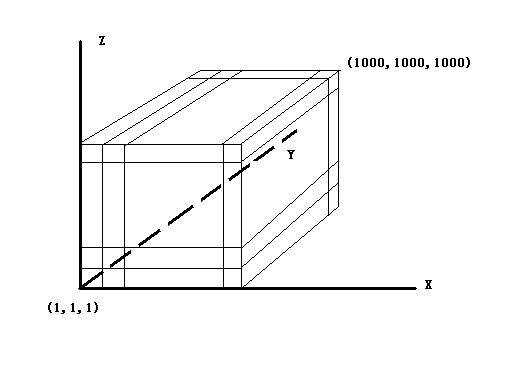1170 . HighSpeed Light Switching Game
Description
The Light Switching Game is played on a 1000 × 1000 × 1000 cube of cells with a light in each cell, as Figure.1 shows. Initially, most of the lights are off while exactly N lights are on. Two players take moves alternately. A move consists of switching the lights at the corners of a cuboid, i.e. (x1,y1,z1), (x1,y1,z2), (x1,y2,z1), (x1,y2,z2), (x2,y1,z1), (x2,y1,z2), (x2,y2,z1), (x2,y2,z2) where 1 ≤ x1 ≤ x2 ≤ 1000, 1 ≤y1 ≤ y2 ≤ 1000, 1 ≤z1 ≤ z2 ≤ 1000 and the light at the corner (x2,y2,z2) must be on (and turned off after the move). Notice the cuboid is possibly degenerated to a rectangle, a line or even a single cell so that the player may also switching four, two or one besides eight lights in a move. The player loses the game when he can not take a move.

Figure.1
You will find out whether the second player can win if both players play optimally.
Input Format
There are multiple test cases.
Every test case starts with one line containing a single number N indicating the number of lights which is initially on. (N ≤ 100)
Each of the next N lines contains the coordinates (x, y, z) (1 ≤ x, y, z ≤ 1000) showing that the light at this position is on initially.
Output Format
One line for each test case which contains "Yes" or "No" indicating whether the second player can win the game.
Sample Input 1
4 5 11 30 5 19 19 23 15 6 2 26 16 3 9 20 9 8 1 28 30 22 26
Sample Output 1
Yes No
Hints
Problem Source
Migrated from old NTUJ.
POJ 3533
Subtasks
| No. | Testdata Range | Score |
|---|